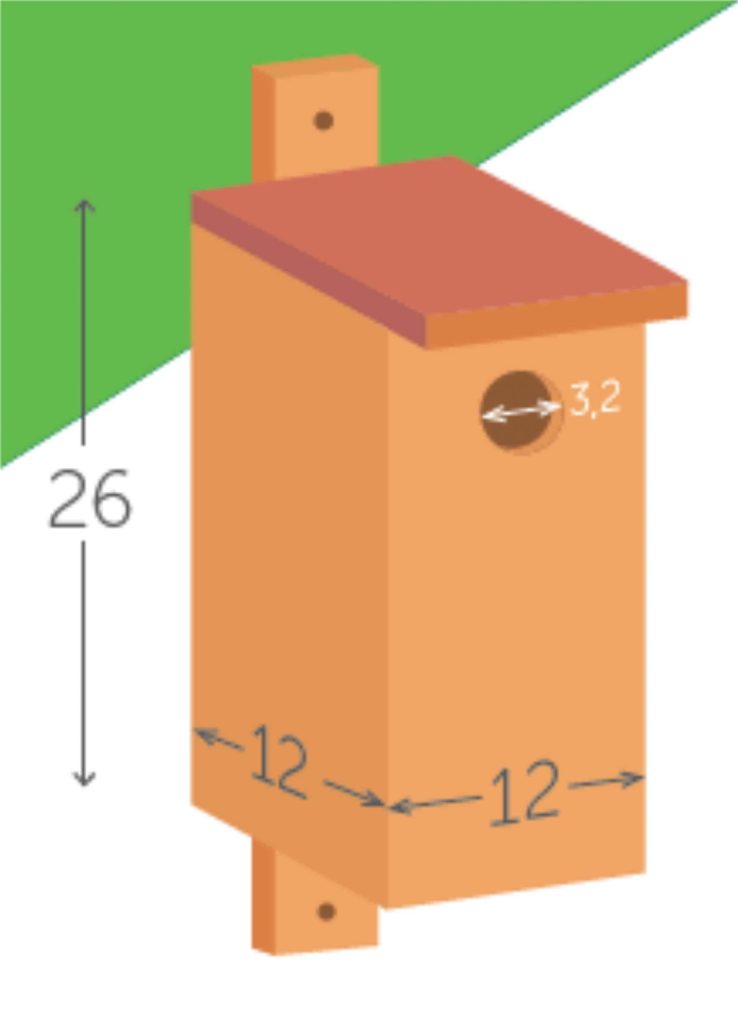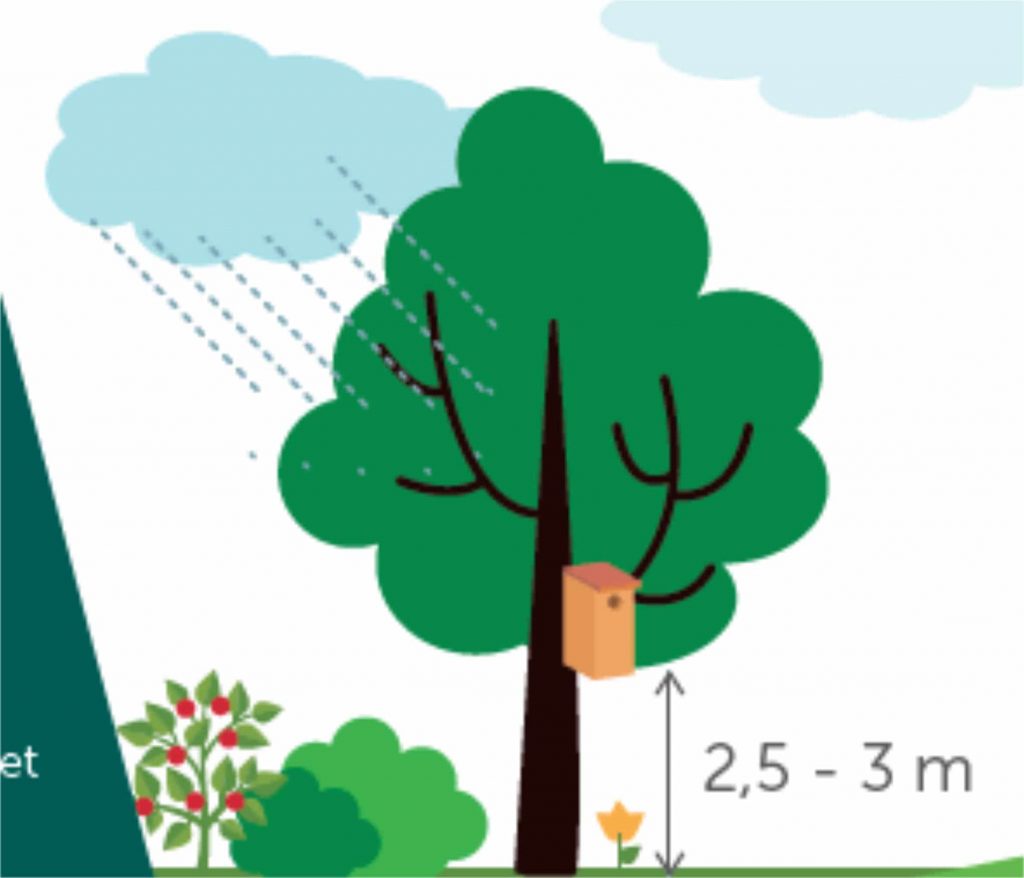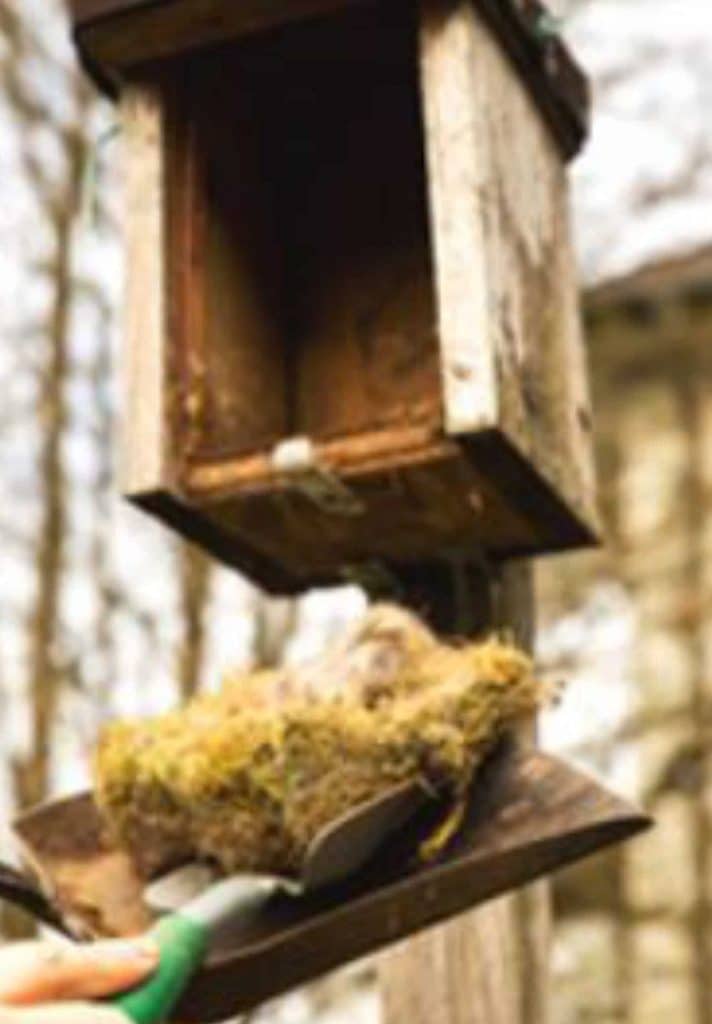Attracting Tits (Paridae) as a predator for oak processionary caterpillars
Would you like to install nesting boxes on your land in order to help reduce the problem with the oak processionary? Below, we will set out the most suitable method.
Nesting boxes can be hung between the beginning of October and the end of December. This guarantees breeding success for the following year.
Installing the nesting boxes
It’s easy to encourage tits to use nesting boxes and the bird has a small breeding territory too. They are not territorial with respect to other tit species. A blue tit, for example, will happily breed near a breeding pair of great tits. The chance of all the nesting boxes being used is therefore quite high. Tits, however, are highly territorial with respect to their own varieties. In a line of trees, you could install a nesting box in each tree without any issues.

Type of nesting box
A nesting box for a tit is easy to make from wood and should be 26 cm high and 12 cm wide. The entrance hole varies per variety. Great tits like an opening of around 32 mm and blue tits like an opening of 28 mm.

Where should nesting boxes be hung?
The nesting box must be hung at a height of around 2 metres on the sheltered side of the tree, i.e. where the rain doesn’t catch it. The wind usually blows from the south-west so hang the nesting box on the north-east side of the tree. The birds do not like continuous disruptions so hang the nesting box away from any noise/interruptions, e.g. a walking path, cycle route or play area).
Ideally, there should be varied shrubs around the tree. This will offer a habitat to other natural enemies of the oak processionary and hiding spaces for the birds. The newly-fledged birds, in particular, can shelter from predatory birds in the undergrowth. Open water is another important aspect.
A good habitat for natural enemies and tits can be created by collaborating with adjoining land managers. A better habitat can be realised if nearby sites are also subject to nature management processes. This could include hedgerow management by farmers, water boards creating nature-friendly riverbanks along waterways and plant-rich dykes, and private individuals offering green, flower-filled gardens.
The best trees for the nesting boxes are trees which are already home to caterpillars or as near to these as possible.
When can the nesting boxes be installed?
Tits hunt for nesting boxes in January and February. Prior to the winter, they seek out a suitable resting place which then usually becomes their nesting place too. That is why it is best to install the nesting box between October and December.
The tits lay their eggs from the end of April to the beginning of May. The earliest moment at which the young fledge is reported to be 13 May.
Monitoring the nest boxes
Tits are not bothered by one or two disruptions during the breeding or rearing period. For this reason, each year the number of young in the nesting box will be checked once.
The aim is to find out whether the nest boxes have been used and how many young have been produced. A link can then be made between the change in the number of caterpillars and the number of tits in the area.
The nesting boxes must be checked by the beginning of May. Nesting boxes at a height of 5 m can easily be reached using a ladder. The number of young should be counted using the viewing opening. Separate nests, made by the birds outside the nesting boxes, should be noted too and, if necessary, the chicks counted.
The great tit may have two clutches of eggs per summer season and then raise the young until the end of the summer. The second clutch, later in the season, will not be monitored, as the birds will no longer feed their young on oak processionary caterpillars with the hazardous hairs.
Please note! Oak processionary caterpillars may also make their nests at warm locations, such as behind nesting boxes or even inside them. So, be aware of the potential presence of caterpillars or caterpillar nests during monitoring.
Monitoring the effects
Each year, the number and size of oak processionary caterpillar nests must be monitored. This allows the effect of the tits’ predation on the caterpillars to be measured.
From the ground, the number of oak processionary nests can be counted per tree. With an experienced eye, the nests can be identified very easily. They will then be categorised according to their size. The ideal period for monitoring nests is from 15 July to the start of September. From mid-August, all the caterpillars are found in their definitive nests and they begin to pupate. In August, the moths emerge but the nest remains intact in terms of size and shape. At every location, the nests will be counted once in this period. From September, there is a risk that nests could be blown out of the trees in high winds.

Cleaning the nesting boxes
Each year, the nesting boxes for the tits must be cleaned to remain free from parasites. This increases the survival chances of the young in the coming season.
The nesting box is easy to clean via a cleaning opening. A ladder and drill is used to remove the box and bring it down. The box is made so that it is easy to open. The old nesting material must be removed and any residues scraped out with a knife. Pesticides should not be used. Once the nesting box is clean, it can be put back.
From November, the tits search for suitable sleeping locations and these are then likely to become their nesting places too. The nesting boxes can be cleaned between September and October, once the young from any 2nd clutch have fledged and before the tits start to hunt for sleeping places for the winter.
The nesting material may be disposed of as organic waste.
Please note! Oak processionary moths may also make their nests at warm locations, such as behind nesting boxes or even inside them. So, be aware of the potential presence of caterpillars or caterpillar nests.